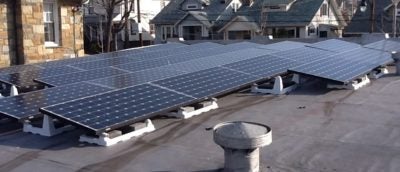Starting from scratch: Building your home for solar

Solar panels are becoming as common on new homes as decks or granite countertops. If you’re having a new home designed, or designing one yourself, there are several things you can do to ensure that when your home is built it is ready for solar. It is best to start speaking with a trusted/reputable solar installer/expert as early in the process as possible.
Before you install your system, be mindful of your home’s expected consumption and incorporate the most efficient design possible. This will help you determine how much of your home’s electricity use will come from solar. Solar PV (electricity-producing) isn’t the only way to use the sun to lower your electric bills. Many homes use what is known as ‘passive solar’ design to absorb the sun’s heat in the winter and deflect it in the summer and some will adopt solar thermal systems to heat water. Energy-efficient design and appliances will help you make the most of your solar PV system.
Once you know how much solar you’ll need, you can then focus on where your solar will be located, either on your roof or on the ground. Both roof and ground-mounted panels should ideally be facing south, as that is where they will receive the most direct sunlight. One of the most important considerations is ensuring open solar access to you panels. They should be free of shading from trees, as that will reduce the panels’ output over time. For ground-mounted panels, you have the system constructed on land that can be easily penetrated six-feet deep.
If you decide to install panels on your roof, it should be free of structures that cast shade, or block paths for solar such as dormers or chimneys. You should also take into consideration the material you use for your roof. It is also helpful to have vents for plumbing and combustion appliances on the north side of the house, away from your panels. While solar racking has improved as the industry has grown, some materials are better than others. Slate, due to its brittleness, makes it difficult for installers to securely anchor panels to your home. Standing seam metal roofs are among some of the best.
Your rooftop system will also require some internal wiring into your house. Doing this as your home is built can save the solar installer time, and you money. This highlights the importance of working with an installer as your home is built. The installer can work with you and/or your contractor to ensure your home’s wiring will easily connect to solar.
A final thing to consider is whether or not you would like to include battery storage with your system. Depending upon where you live and the reliability of your electric service batteries may not yet be a cost effective option, but one that soon could be. If you think battery storage is something you would want to include in your system, either when you have your system installed, or later as the price for batteries drops, you should be sure to leave space in your new home to store the batteries.
